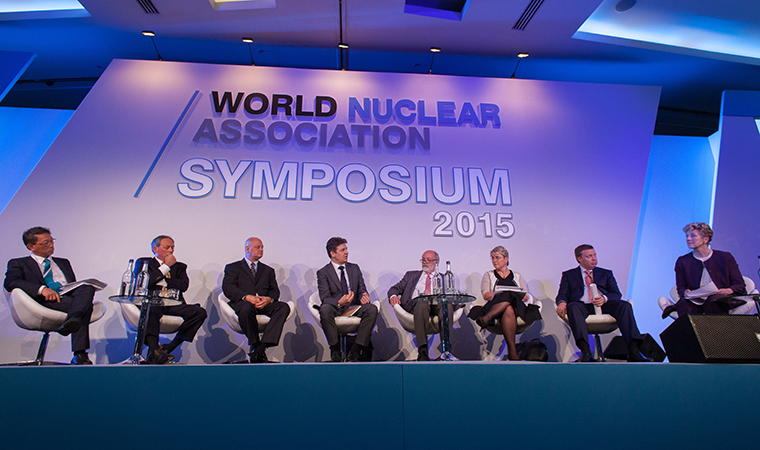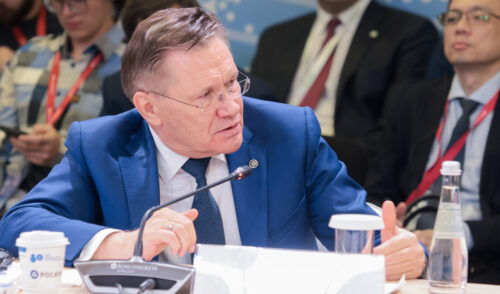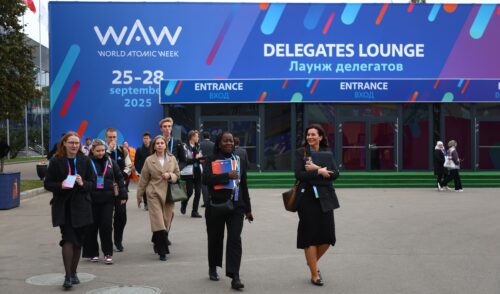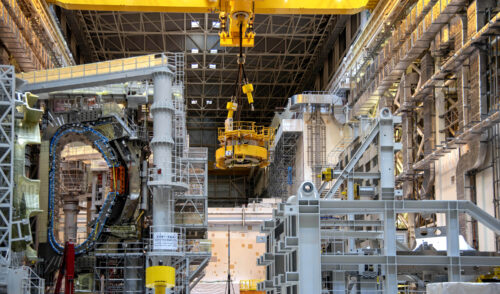
Nuclear power industry to continue growth
back to contentsThe centerpiece of the symposium was presentation of the Nuclear Fuel Report: Global Scenarios for Demand and Supply Availability 2015—2035. Published twice a year, the Report contains nuclear power and uranium market forecasts. Despite significant forecast revisions, the essential message of the document remained unchanged – the industry will continue growing, yet at a slower pace than desired. “Key indicators are down, but we should not disregard the fact that expected growth is still many times higher than the nuclear capacity expansion in the 1990s,” noted WNA Director General Agneta Rising. She told RN on the margins of the event that the forecast was influenced by two primary factors. “There are two major factors behind the forecast. The first of them is politics. A perfect example is a decision of the French authorities to restrict the share of nuclear power to 50%. The other major factor is a situation in Japan where reactors shut down after the Fukushima disaster are re-started, though not as fast as planned. Everyone understands that Japan will return to nuclear power but it is unclear how soon it will happen.”
The Report describes reference, upper and lower scenarios. Figures in the reference and upper scenarios are somewhat lower than in the 2013 Report while the lower scenario is almost the same. The new report covers a period from mid-2015 till 2035 vs. 2030 in the previous document. According to the reference scenario, the global generating capacity will increase from 379 to 552 GWe in 2035 (2.4% on the annual average). The upper scenario assumes 720 GWe and 3.7% respectively (less than 400 GWe and 0.4% for the lower scenario).
By contrast, the reference scenario presented in the 2013 Report assumed faster growth of generating capacity from 334 to 574 GWe by 2030 (3% per annum). The upper scenario provided for 4.2% growth or 700 GWe by 2030 while the lower scenario anticipated no growth at all.
After the forecasts were announced, WNA called everyone to think long-term. In 2050, nuclear power should account for 25% of all power generated in the world, according to Agneta Rising. Now the figure is around 11% only. “Political or regulatory barriers will be put on our way but this is our goal,” stressed the WNA Director General. To achieve the goal, 1,000 GWe of new capacity is needed to be installed (50 GWe in 2015–2020, 125 GWe in 2020–2025 and 825 GWe by 2050).
During the high-level panel discussion, Rosatom Deputy CEO Kirill Komarov noted that the 1000 GWe target set by the WNA is curious “because even at the height of construction we’ll be coming back to the 1980s level.” It is important, he said, to note the current difference in the rate at which new units are brought on line. “In the Soviet period, we had peaks when we commissioned seven units a year, with more than five units on the annual average. Now just four are considered to be a big job.”
The new reality raises the importance of Rosatom’s standardized approach to new nuclear projects. “It doesn’t mean we build nuclear power plants based on exactly the same design or in the same country,” he said. “For example, Paks II will be the tenth and eleventh unit of the same concept. Others were built in Russia, Belarus and Finland. The general concept remains the same although we have to meet national regulatory requirements and adapt the design accordingly. And if you reproduce the concept each time, you come to know it very well. When anything goes wrong, for example, with a reactor vessel, you can take the vessel made for another project and install it instead. That is, we do not have problems meeting our obligations or increasing the number of our orders.”
Another topic of the high-level panel discussion was NPP project funding. Rosatom runs nuclear construction projects in 11 countries. Not all of them are financed by Russia, says Rosatom Deputy CEO Kirill Komarov. “Many clients, like China for example, pay for reactors without Russia’s financial support. It is a similar story in Iran, which now offers more cooperation opportunities after international sanctions have been lifted. In India, Russia finances only a part of the Kudankulam project while most funds come from the Indian Government and Indian companies,” he said. Paks II in Hungary is the only project financed with the loan provided by Russia, he added. “Yes, we hold a stake in Fennovoima but it does not mean we finance 100% of the plant. We contribute to the project in proportion to our equity share as any other shareholder does,” said Kirill Komarov.
Attila Aszódi, a commissioner for Paks II at the Hungarian Prime Minister’s Office, explained that Russia would provide a loan to cover 80% of the Paks II project costs. “Quite a low-rate credit facility will help us push down capital costs in the long run,” added he. “If we allocate them for the entire lifetime of the plant, the cost of electricity is expected to be about EUR 50–55 per MWh.”
The Paks II project has cleared two of four hurdles at the European Commission level, he said. First, the European Atomic Energy Community (Euratom) approved a fuel supply contract between Hungary and Russia in April. Second, earlier this month the European Commission confirmed that the project complies with the provisions of Article 41 of the Euratom Treaty. The two open issues are procurement terms and whether the Russian and Hungarian funding constitutes illegal government aid. Aszódi concluded, “We are in daily contact with the Commission and hope to settle the issues in the near future.”




